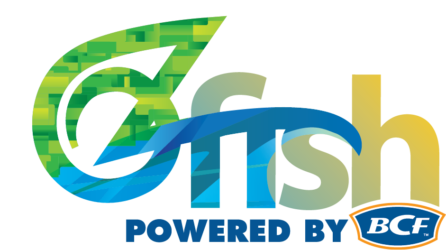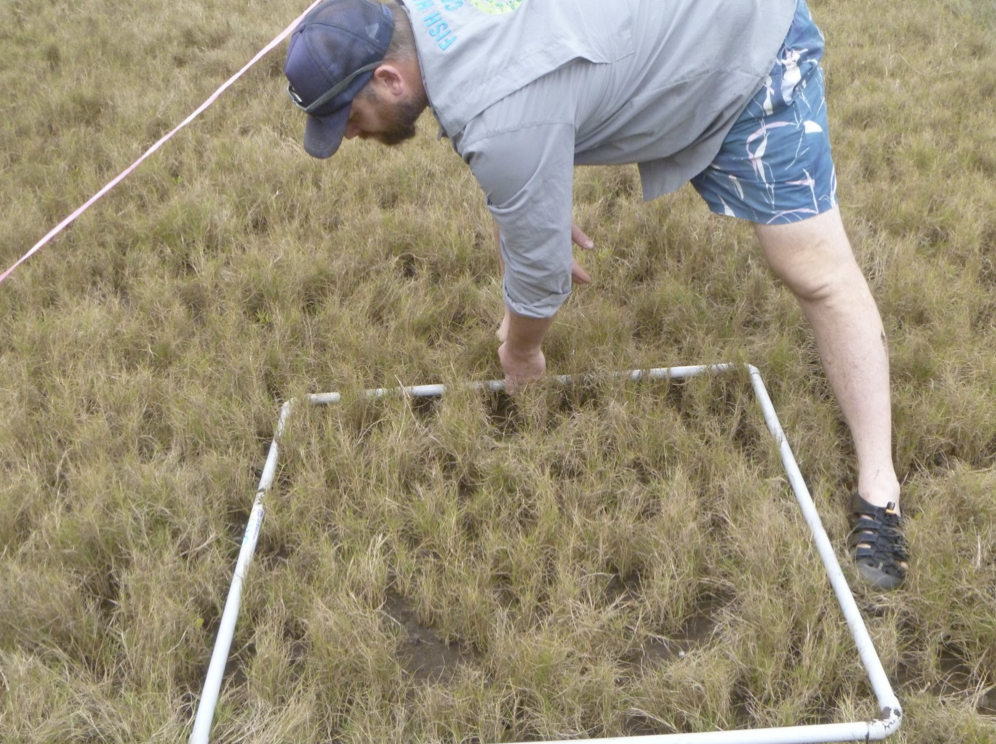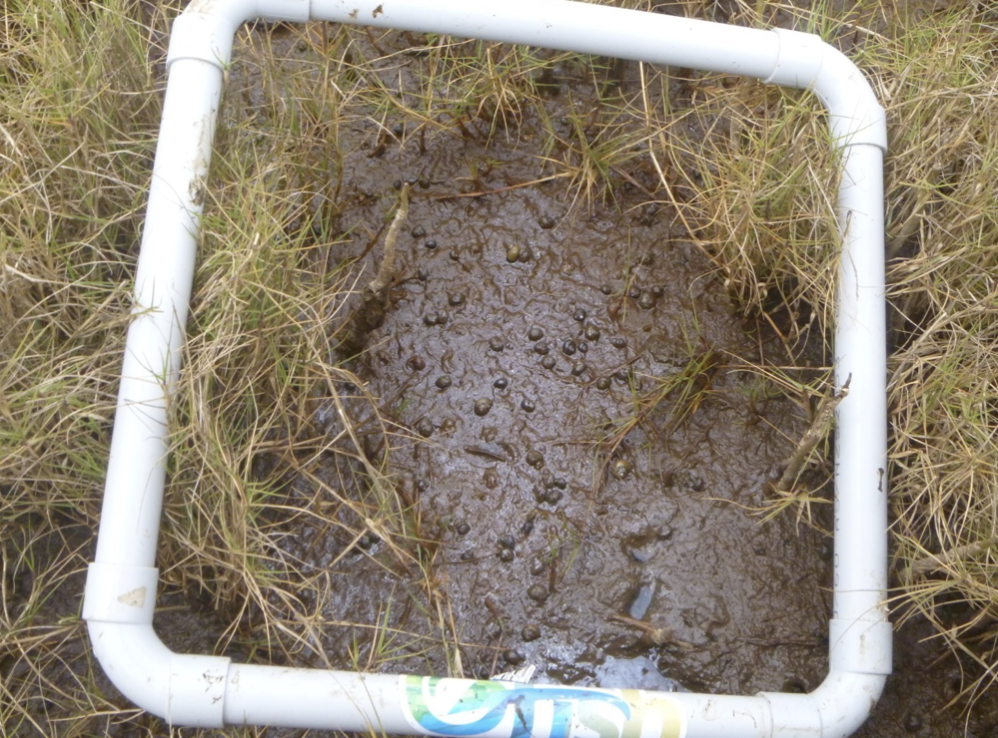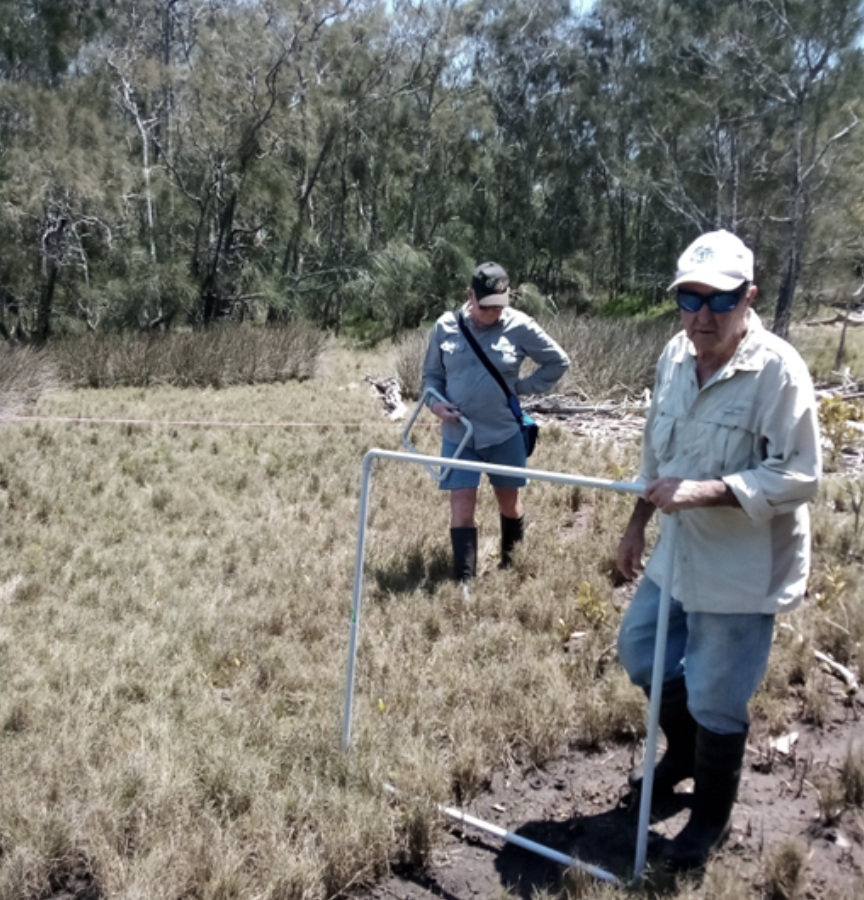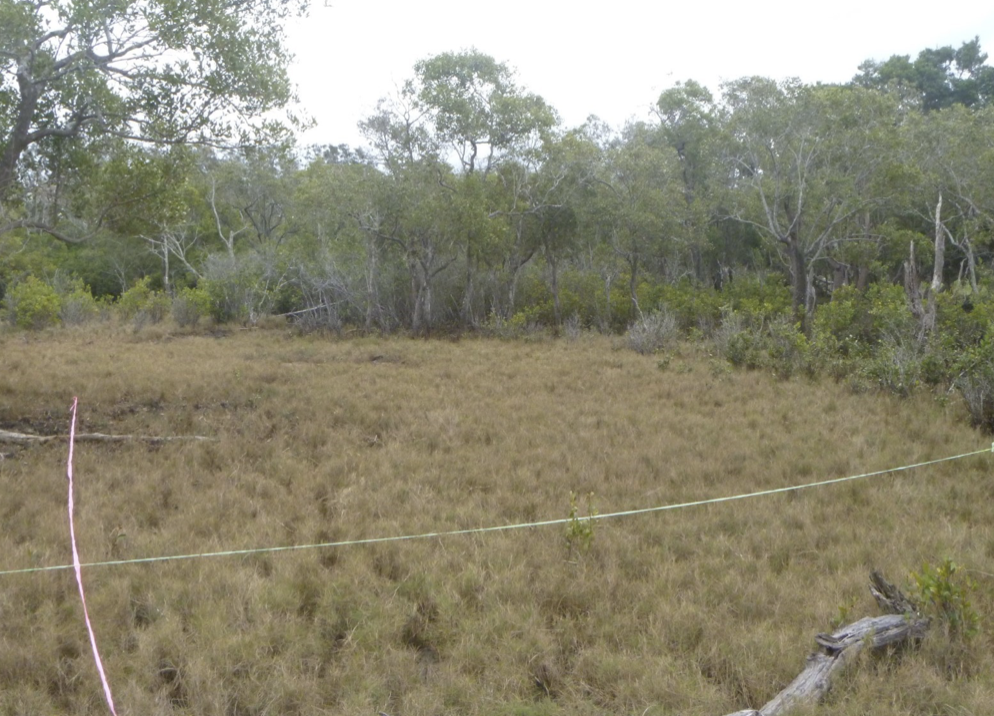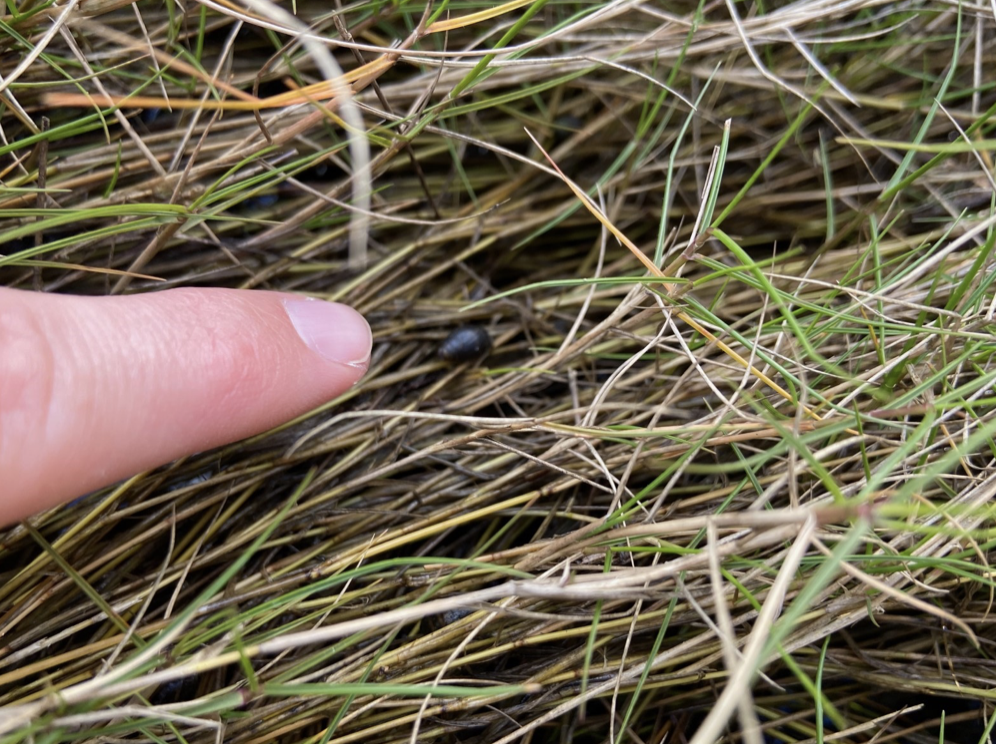How and why we monitor saltmarsh
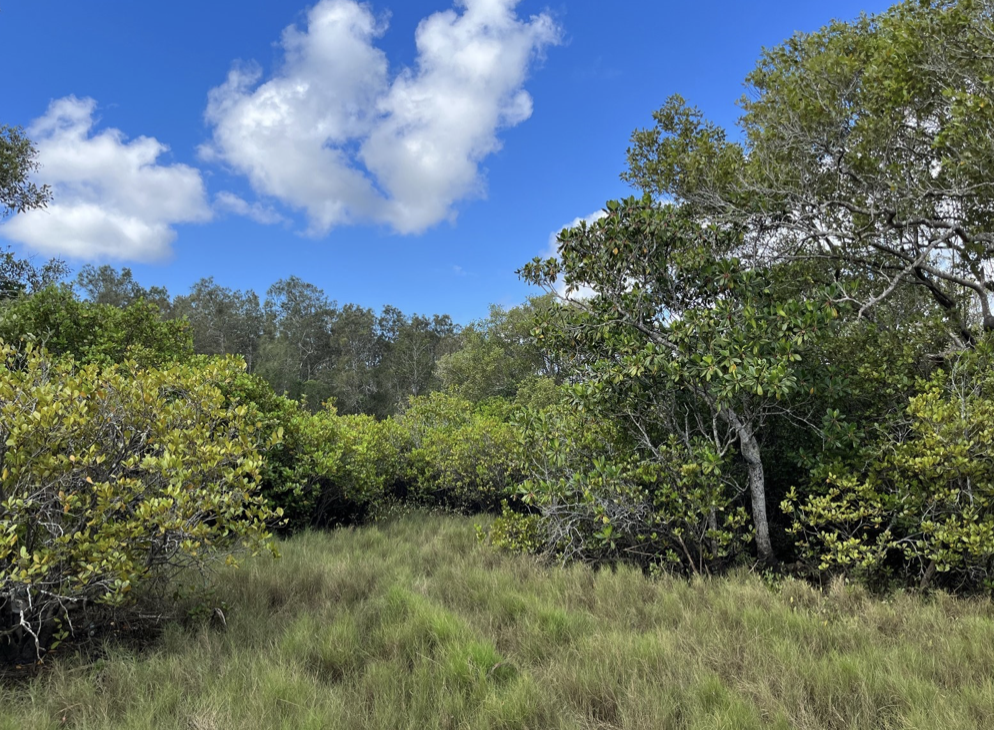
Saltmarsh are an important element to our coastal ecosystems and are undervalued for the benefit they bring our local waterways. Saltmarsh acts as a buffer system between our salt and freshwater systems and can withstand the salinity of the salty soils near our coast.
Saltmarsh and mangroves work as a team protecting our coast and helping support our fisheries. Mangroves establish at a lower elevation than the saltmarsh. Where there are mangroves, there is saltmarsh only a few feet away. The ecosystem provides an essential coastal resource by reducing erosion and storm protection. Saltmarsh and mangroves also reduce the amount of CO2 in our atmosphere through carbon sequestration.
With increasing greenhouse gases in our atmosphere, saltmarsh and mangrove habitats are becoming more valuable for their ability to store carbon. The saltmarsh habitats also provide shelter and food for our fish, especially when inundated at high tide. Some studies have recorded over 40 fish species that call our saltmarsh habitats home and several crustaceans (Crabs!). The habitat provides an important food source for our fisheries with growth of algae and plants that attract small fish, crabs and juveniles.
OzFishers are Keeping Saltmarsh Healthy
The Saving Our Saltmarsh project is caring for and studying saltmarsh over a 5 year period. The aim of the project is to protect and restore the saltmarsh and raise awareness of its role as fish habitat. Part of the project is to is to monitor the progress of the actions fishers have been conducting on this project. This monitoring takes place once every 12 months by fishers with the help of OzFish ecologists.
Some of the protection measures are to reduce human impact on the area. These include removal of rubbish, changing access points to avoid people walking on the saltmarsh, education days to the community about the importance of saltmarsh and how they can look after it, buffer planting in the area, and weed removal. There was three locations where the saltmarsh surveys were conducted: Fishery Creek, North Creek and South Ballina.
Fisher Science in Action
The survey areas are started by establishing a 10 x 10 m area for the surveys, and up to 4 quadrat are observed within the 10 x 10m survey area. We use the same survey areas every year so that we can observe the direct change to that specific area of the saltmarsh. Saltmarsh cover is estimated in the quadrat by a percentage (between 0-100%) and then any die off of the saltmarsh is also calculated (between 0-100%) to make up the 100% cover.
This helps researchers understand if the saltmarsh is improving and our work on the protection of saltmarsh has been beneficial. If any other plant species like mangroves or any weeds are in the quadrant they are also recorded. A general observation of the area, including any remnant rainforests and neighbouring plant species will be included as additional information for the survey.
Crab Counting – What is it and how does it work?
Crab counting is an important step in saltmarsh surveys. Crabs assist with the health of the saltmarsh. There are a few species of crabs, some of them dig burrows which help aerate the sediment, some crabs are great food for fish like flathead and some crabs help keep down the debris (dead things) and algae that come onto the saltmarsh. Like anything though, if there are too many or too less of crabs in the saltmarsh it can deteriorate the saltmarsh. If you know your crabs, you’ll know that they are too quick to be seen to count them so we count the crab burrows instead.
Crab burrows are recorded by placing a 1m x 1m quadrat (as seen in the picture below) within the saltmarsh survey area. This is repeated four times and an average is taken. Only new and active burrows are recorded. Crabs are a good indicator of saltmarsh health, if the crab population is thriving it means there is plenty of food for them to eat and they, in turn, are being eaten by fish and other predators.
Snail Density – What they tell us about Saltmarsh health
Snail density is recorded as well by placing a 30 x 30 cm quadrat in the surveyed area. This is conducted around high tide for accurate snail density data. They’re not your everyday garden snail, these snails are specially adapted to the salty conditions of the saltmarsh. They are usually small, not much bigger than 1cm and often in high numbers.
Snails work to cycle the plant matter and algae that grow on the saltmarsh back into the soil, just as land snails do. You will find the snails on the saltmarsh plants themselves. They are an important food source for not just fish, birds and bats will forage and consume the snails. Snails are also a good indicator of the health of the ecosystem.
The Results
The surveys were first conducted in August of 2020, our fisher volunteers conducted a follow-up survey in November of 2021. The two surveys were compared to each other to monitor the health of the ecosystem.
Overall, the sites have shown great improvement in saltmarsh health.
OzFish found at the Fishery Creek site that there was a slight increase in the coverage of saltmarsh plants and a slight decrease in dead plants, which was positive. We observed a small decrease in the crab and snail population. There was an increase in the mangroves growing into the saltmarsh area, which is less positive and likely a result of higher tidal reach over 2021 as a wetter year than 2020.
At the North Creek site there was a decrease in the saltmarsh plant coverage but less of it was dead plant cover, a net positive. There was also an increase in the crab and snail population.
With reduced weed impact and less litter and dumping impact from the work of our local OzFishers. The saltmarsh is thriving and the data clearly shows an improvement in the health of almost 20%.
At the South Ballina site there was a decrease in the dead saltmarsh plants and a healthy coverage of plants overall. The crab and snail population reminded the same. OzFishers have been working to remove the litter washing up with the tide at this site and the effect has been noticeable in the data with a 5% increase in overall health at the site.
All three sites are still considered healthy and we hope to see continued improvement in the next survey.
A Big Thank You To Our Volunteers
Our hard-working volunteers are going to make surveying over the next 5 years possible. Volunteers are a very important and valued aspect in our OzFish community. Several of our projects would not be possible without our fisho volunteers.
If this project is something that interests you and you would like to get involved please get in touch via the website or social media. We love hearing from you and are excited to get you involved with our other projects in your local area.
